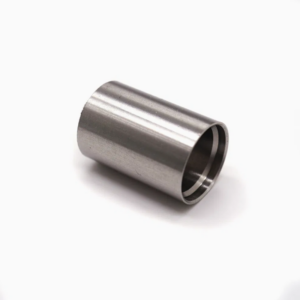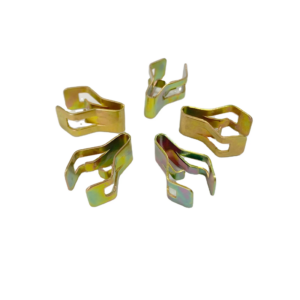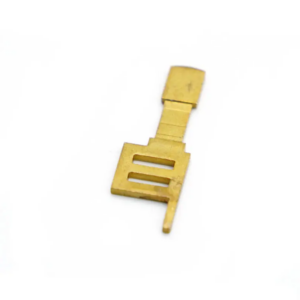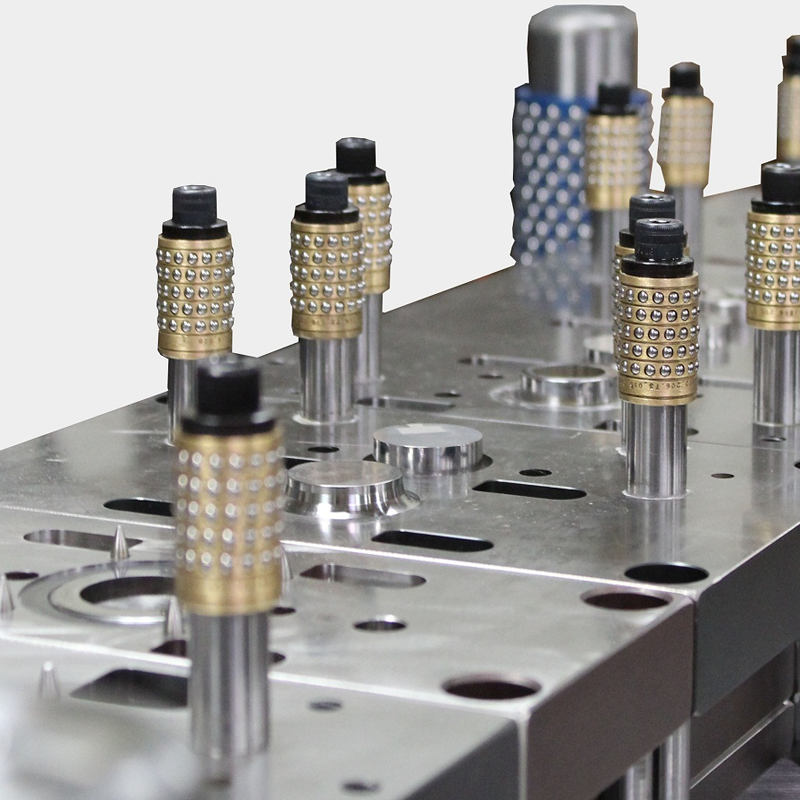At Plantmetal, we are committed to delivering high-quality, precision stamping dies designed for a wide range of industrial applications. Our expertise in advanced tooling and die design, paired with cutting-edge technologies, ensures that we consistently meet the demanding needs of our clients. Whether you require components for automotive, aerospace, or consumer electronics, we understand the importance of accuracy, durability, and reliability in stamping die components. In this blog, we’ll explore the critical elements of stamping dies and the latest advancements in die manufacturing technologies that make these tools more efficient and precise than ever before.

Die Plate
In the world of stamping dies, die plates are essential components that provide structural support and ensure proper alignment throughout the stamping process. Typically, die plates are categorized into four main types: locating plates, shim plates, backing plates, and the die shoe. Each serves a specific function in the die set, contributing to the overall performance and precision of the tool.
- Locating Plates: These plates are used primarily in complex dies, especially those featuring multiple stations or intricate structures. Their primary role is to ensure the accurate positioning of different mold parts, maintaining the correct alignment of the workpiece during each punch operation. This precise positioning is critical in multi-step operations to ensure uniformity across all stages of production.
- Shim Plates: Thin and adjustable, shim plates are designed to facilitate small height adjustments within the die. These plates are commonly used to modify the gap in the die to accommodate different material thicknesses or to fine-tune the mold’s operation for specific punch tasks. This level of flexibility is vital for ensuring optimal die performance, particularly when working with materials of varying characteristics.
- Backing Plates: These plates provide additional support to the sheet material during punching. Positioned at the base of the die, backing plates are crucial for stabilizing the material and preventing deformation during high-pressure operations. Their role is particularly vital in dies that require significant force to shape the material.
- Die Shoe: Serving as the base of the entire die set, the die shoe is the support structure that underpins the die. In larger stamping tools, this component bears the full force of the press operation, transmitting the punch’s force to ensure stable and precise stamping. The die shoe ensures that the upper and lower dies are aligned, providing a strong foundation for the entire stamping process.

Guide Posts
Guide posts are integral to the operation of a stamping die, ensuring that the upper and lower dies remain aligned throughout the press cycle. These vertical supports are typically paired, with one post connecting to the upper die and the other to the lower die. The precise alignment of the dies is essential for maintaining high-quality standards and preventing defects in the finished workpiece.
Guide posts are designed to allow for vertical movement, which accommodates the up-and-down motion required during the punching process. Typically, guide posts are used in conjunction with guide sleeves that stabilize the movement trajectory and ensure the dies align correctly throughout each cycle. The posts are often equipped with spring mechanisms that absorb impact forces, preventing damage to the die and enhancing its longevity.
At Plantmetal, we understand the importance of durability and precision in the design of guide posts, which is why we use only high-quality materials and advanced manufacturing techniques to create these critical components. This ensures that our clients receive dies that perform consistently and reliably, even under high-volume production environments.
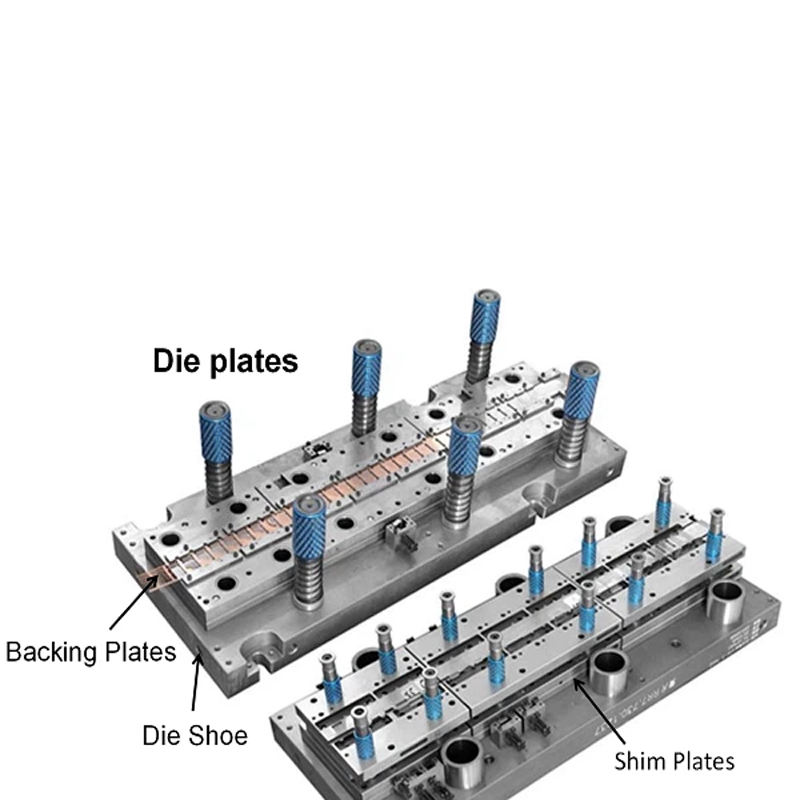
Guide Bushings
Another key component in stamping dies is the guide bushing, which works in tandem with the guide posts to ensure the upper and lower dies are precisely aligned during the punching process. These bushings provide a sliding surface for the guide posts, reducing friction and improving the overall accuracy of die alignment. Guide bushings are typically made from wear-resistant materials such as bronze alloys, stainless steel, or coatings designed to enhance durability.
The design of guide bushings ensures that they fit securely over the guide posts, maintaining smooth and stable die movement during the stamping operation. In high-precision applications, the quality of the guide bushing plays a significant role in minimizing wear and extending the life of the die, which is why we at Plantmetal prioritize precision engineering in their manufacture.
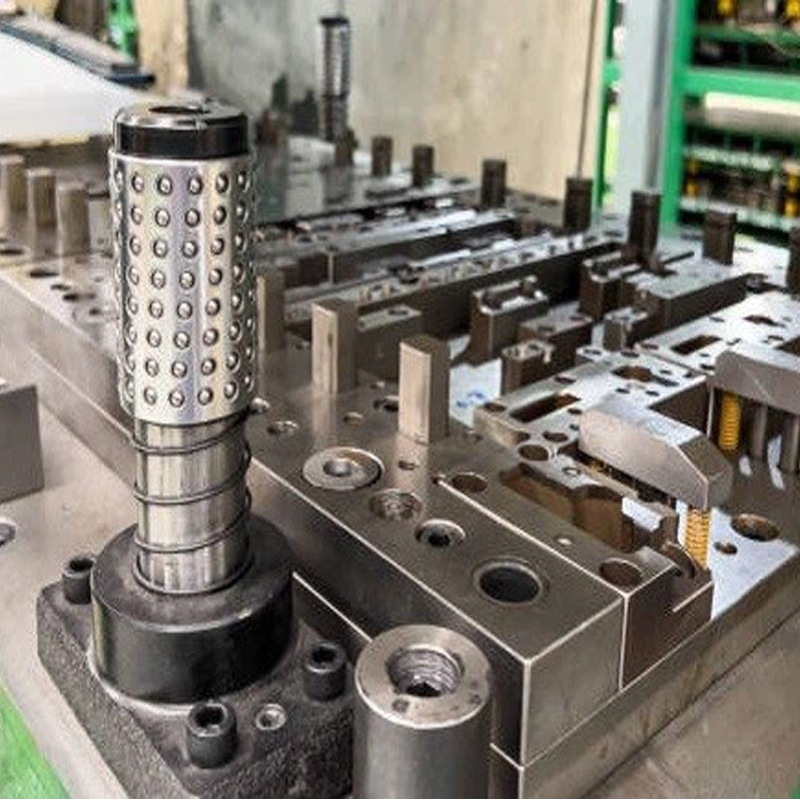
Die Springs
Die springs are another essential component in the stamping die set, providing elastic support and restoring force to the mold. These springs are typically installed on the guide posts, helping to absorb the shock and vibration generated during press operations. By allowing the die to return quickly to its original position after each stroke, die springs play a vital role in maintaining the efficiency and longevity of the tool.
Made from high-strength alloy steel, die springs are engineered to withstand the stresses of high-impact operations. Their design is customizable, offering different levels of resiliency to meet the specific needs of the stamping process. Color-coding systems are often used to identify different spring strengths, ensuring that the correct type is selected for each application.

Locating Pins
Locating pins are crucial for ensuring the correct placement of the workpiece within the mold. These pins fit into corresponding locating holes in the material, ensuring that the workpiece stays in the correct position during the punching process. This precise positioning helps maintain uniformity and accuracy across multiple punch cycles, which is essential for high-quality production.
To further enhance the lifespan of the locating pins, many are designed with self-lubricating properties or wear-resistant coatings. This reduces friction and ensures smooth, reliable operation, especially in high-volume production environments.
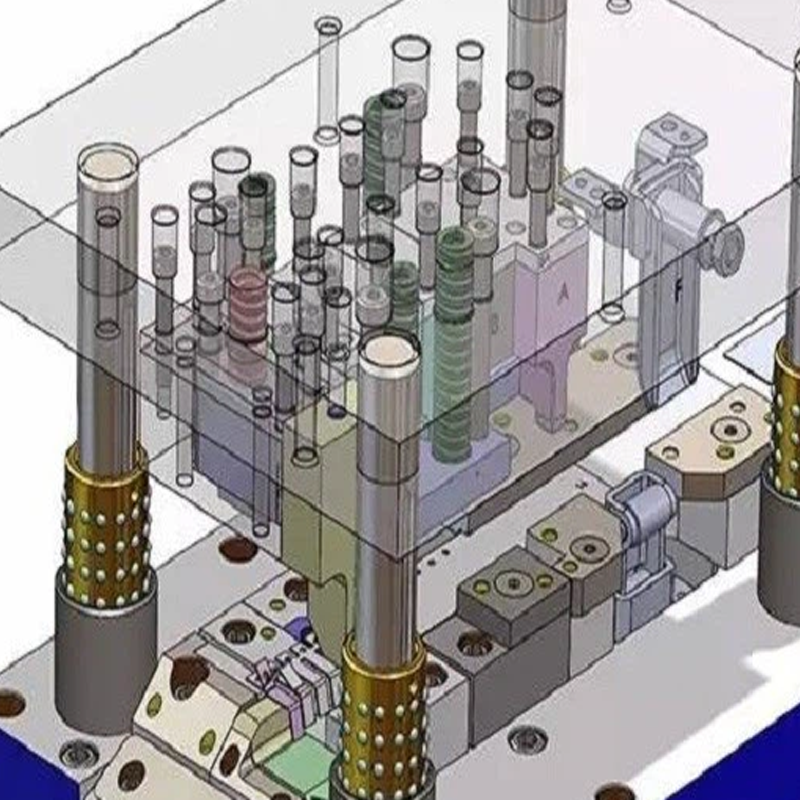
Punches
The punch is the component of the stamping die responsible for cutting, forming, and shaping the workpiece during the punch cycle. Designed for high-speed operations, punches come in a variety of shapes and sizes to meet specific production requirements. They are typically made from high-speed tool steels or carbide materials to ensure resistance to wear and high-intensity impact.
For high-volume production runs, punches may be equipped with cooling systems to prevent overheating, which helps maintain consistent quality and prolong the life of the die. Additionally, punches are designed to be replaceable, allowing for quick changes without needing to replace the entire die set when different workpieces are required.

Fasteners
Fasteners are the unsung heroes that hold the various components of the stamping die together. Bolts, nuts, washers, and flange bolts are commonly used to secure the upper and lower molds, guide posts, and other elements of the die. Proper fastening ensures the stability, accuracy, and durability of the die, preventing misalignment and wear during high-speed operations.

Advanced Die Manufacturing Technologies
At Plantmetal, we leverage advanced die manufacturing technologies to produce tools that meet the highest industry standards. These innovations include:
- Digital Design and Simulation: We utilize advanced digital tools, including CAD and CAE, to optimize die design and reduce errors. This approach allows us to simulate the die’s performance before production, ensuring that the final product meets our exacting standards.
- High-Speed Milling and EDM: By employing cutting-edge CNC milling and electrical discharge machining (EDM), we enhance the precision and surface quality of our dies. This technology ensures that even the most complex parts are fabricated with high accuracy, reducing production time and improving efficiency.
- Intelligent Manufacturing: Our facilities are equipped with intelligent monitoring systems that track mold performance in real-time, predict maintenance needs, and improve overall production reliability.
- Automated Production Lines: With the integration of robots and automated systems, we’ve streamlined our production processes, allowing for faster mold changes and more flexible manufacturing operations.
- Surface Coating Technologies: We use advanced coatings such as TiN and TiAlN to enhance the durability and wear resistance of our dies, improving their longevity and reducing maintenance needs.
Through these innovations, Plantmetal is at the forefront of precision die manufacturing, providing our clients with tools that are more efficient, durable, and adaptable to evolving production needs. Whether you require a custom die set or a large-scale stamping solution, we are ready to meet your needs with the highest standards of quality and precision.
At Plantmetal, we are here to help you optimize your production processes with top-tier stamping die components. Contact us today to discuss how we can support your manufacturing needs and provide you with high-quality, reliable tooling solutions that drive your business forward.

